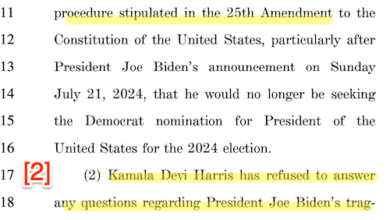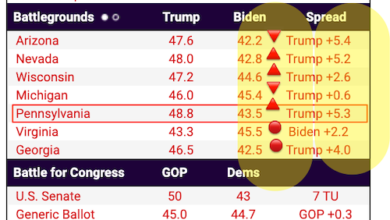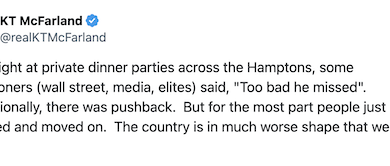
Yves here. From time to time, we’ve mentioned the way higher eduction has come to be about just about anything except education. Credentialing. Naming opportunities for rich donors. Labor exploitation via the use of badly underpaid adjuncts. Adminisphere feather bedding. And these have all been side effects of the fact that the most “successful” as in best endowed institutions some time back started to operate as hedge funds with education subsidiaries. So the New School tale that Michal Hudson recounts below is an illustration of this sorry pattern.
The prompt for Hudson’s article is a February 16 New York Times story by Sharon Otterman, Facing Budget Troubles, Some Colleges Look to Sell the President’s House. The article describes some of the painfully obvious class warfare in higher education, such as students not born to wealthy parents straining to pay tuition and meagerly-paid instructors, versus lavishly compensated top brass. But the article does not point out that monetizing real estate, even if in this case it also rid of a stick-in-the-craw executive perk, does not do much for the institution’s floundering finances.
The president of the New School in Manhattan is about to lose an extraordinary perk: a five-story West Village townhouse that for decades has served as the university head’s official residence.
The school, which projected a $52 million budget shortfall for the 2024 fiscal year, is asking $20 million for the home as it seeks to stabilize its finances. The sale comes as shaky student enrollment, inflation and other forces are threatening smaller colleges in New York City and around the country. To stay healthy, some have sought to sell off real estate assets to shore up their balance sheets….
Nearly 90 percent of the New School’s faculty are part-time adjunct professors, some earning as little as about $6,000 per course, union leaders said. Dwight A. McBride, who resigned as the university’s president last summer, earned a total of $1.4 million annually, according to federal tax forms….
In New York City, major research universities with large endowments like New York University and Columbia have been growing their real estate portfolios and transforming blocks and neighborhoods. But as the number of students heading to college has dropped in the wake of the coronavirus pandemic and as the New School and other less wealthy institutions fight for students, more have been turning to real estate sales as a way to plug budget gaps and buoy endowments….
Lacking a large endowment, the New School is heavily dependent on tuition revenue. Located in one of the most expensive neighborhoods in the country, it charges at the top end for American schools, with an estimated total annual cost of $85,000 for a full-time undergraduate student living on campus last school year, according to the National Center for Education Statistics. Nearly all students get some form of financial aid.
To keep its classrooms filled, the New School has been less selective than some of its better known neighbors, admitting 57 percent of those who applied for the fall of 2022, compared to 12 percent at N.Y.U., statistics show. More than a third of its students in 2022 were international.
Half of the undergraduate students who entered the school in 2018 did not graduate within four years….The university has also been spending heavily on debt payments, after borrowing more than $300 million to build a new flagship building on the corner of Fifth Avenue and 14th Street. The school had high hopes that it would generate significant revenue from student dorms, but that has not panned out as well as planned, Dr. Reddy said.
Hudson also mentions in passing the weird posture New York City landlords take to retail tenants. Many many years ago, significant vacancies in what had been vibrant and tony shopping area like upper Madison Avenue, Third Avenue and then even prime Madison Avenue (the Sixties) became common. And it was not due to tenant failure but tenants being driven out by rent increases. For instance, on Third Avenue in the low Eighties, the landlords had held rents flattish for a few years after the financial crisis. Then as if they all got together in a smoky room and agreed, all the rents doubled. Mind you, inflation and borrowing costs were low and it was not as if Manhattan was suddenly in a boom so that resident incomes and therefore spending were way up. A few soldiered on with the big cost rise, but most either moved or shuttered.
By Michael Hudson, a research professor of Economics at University of Missouri, Kansas City, and a research associate at the Levy Economics Institute of Bard College. His latest book is The Destiny of Civilization. Originally published in the Investigación Económica (Economic Research), produced by UNAM (Autonomous National University of Mexico)
I found a story in Saturday’s New York Times that I think epitomizes the crapification of higher education in the United States. It concerns the New School, where I taught at the graduate faculty from 1969 to 1972 (when it was still called the New School for Social Research).
When I was there all the economics (and I think the other) faculty members were full time. But as universities have bloated their bureaucratic administrative overhead, their cost squeeze has forced them to shift to part-time instructors – “Visiting Professors,” they’re called. The NYT article reports that: “Nearly 90 percent of the New School’s faculty are part-time adjunct professors, some earning as little as about $6,000 per course, union leaders said. Dwight A. McBride, who resigned as the university’s president last summer, earned a total of $1.4 million annually.”
I myself had gone to graduate school at New York University half a mile away. I must say that at that time most of my professors already were part-timers. But actually, they were the ones that turned out to be the best, because they all had real jobs working in the real world – at the United Nations, the National Bureau for Economic Research and other actual working relationships.
By far the worst professors were full-time professors – meaning unrealistic academics, given the fact that I was in the economics department. The full timers were hopelessly incompetent for monetary theory, trade theory. Students were penalized for raising real-world points to criticize the junk economics that already was being taught in the mid-1960s. I got a C or C- in monetary theory for criticizing the Loanable Funds theory, and had to retake my PhD orals for criticizing Carl Menger’s barter theory of money. In effect, I was told, “Who are you going to believe: your own experience and history, or what the textbooks and professors say?”
The difference is that today’s “visiting professors” are not experienced professionals teaching because they like it. They are recent PhD graduates – finding few full-time jobs available at any universities. So students get the worst of both worlds: orthodox crapified neoliberalism and part-time faculty just trying to scrape by. There are news stories of some U.S. professors sleeping in their cars because they can’t afford to rent apartments.
The New York Times study focused on how the New School is trying to scrape through its budget deficit by selling the $20 million house that was used by the president. That amounts to half of the $40 million annual deficit.
That brings up another experience I had. In 1970 or 1971 I was paid $13,000 a year. Not much – so the Dean of the Graduate School gave me a contract to calculate how much the New School would make by merging with the Parsons School of Design across the street. I explained that the merger was basically a real estate deal, and said that the New School would do very well, because the property would be tax-exempt. And that’s just what has happened.
That’s because part of the crapification process is that universities in New York City have basically become real estate companies that hold classes in some of their property in order to get tax exemption on the remainder. Columbia University owned the land under Rockefeller Center before selling it to the Japanese at a vastly overpriced deal (on which the buyers lost their shirt). New York University owns most of the property round it – which it has used to destroy the cultural life that used to characterize Greenwich Village and 8th Street by raising rents to drive out the book stores, drive out the record stores, drive out everything cultural and replace them with shoe stores and whatever large corporate companies could meet the high rent demands. There was no idea of universities trying to subsidize the kind of stores that would actually upgrade life in their neighborhood. Today block after block of vacant boarded up stores is what greets the NYU neighborhood, from 8th St. to Bleeker Street. Columbia is the same.
Universities through the US have held their actual professorship personnel stagnant while adding and adding to bureaucrats. These PMC members – Professional Managerial Class – are paid more in proportion to how much they can pay the actual content providers less. I’m told that this is as true of Harvard as it is in New York and elsewhere. It’s an economy-wide phenomenon. And the same seems to be the case in London, according to my friend Steve Keen.
Even so, the New School had to begin laying off 122 clerical and staff members in October 2020, and in 2022 there was a strike of student aides. This too has become a nation-wide phenomenon.
The GDP reports all this as soaring productivity – that is, what should be called Gross National Cost, not “product.” The New York Times article reports that Located in one of the most expensive neighborhoods in the country, it charges at the top end for American schools, with “an estimated total annual cost of $85,000 for a full-time undergraduate student living on campus last school year.”
That’s why President Biden says that the U.S. economy is booming!
Source link





